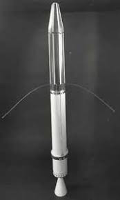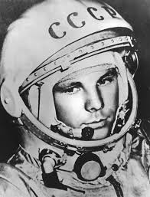The Race to the Moon
The operation of landing people on the Moon was the culmination of scientific curiosity, on-the-fly problem-solving, and political expediency. The early development of the American space program took place during the backdrop of the Cold War with the Soviet Union and featured ever more complex and far-reaching spacecraft. 
A joint U.S. Army and U.S. Navy initiative called Project Orbiter launched in 1954, with the goal of putting a satellite into orbit during the International Geophysical Year, as part of a worldwide celebration that was to run parts of 1957 and parts of 1958. The timeline for the launch wasn't exactly an accelerated one. The launch of Sputnik, the Soviet Union's first satellite, changed that. Trading Success StoriesEven with a jump-start, the U.S. couldn't keep up initially with the Soviet space program. Sputnik 2 launched on Nov. 3, 1957, with the dog Laika onboard. 
On Dec. 6, 1957, NASA launched a Vanguard rocket carrying Explorer. The launch was televised, and so was the explosion that engulfed the first attempt. The failure was the subject of intense inquiry, and NASA fixed the problems well enough to have a successful launch on Jan. 31, 1958. Explorer 1 was away. The U.S. launched three Explorer satellites in all, the prime achievement of which was Explorer 3's proof of James van Allen's magnetic belt theory. NASA named the belts after him. The Vanguard program continued as well, measuring Earth's magnetic field and the effect of solar X-ray radiation on Earth's atmosphere. The Soviet Union launched another pair of dogs into space in 1960, along with some other animal passengers, a rabbit, dozens of mice and rats, and some fruit flies. Humans in Space The entire trajectory of the space programs of both companies changed on April 12, 1961, when seemingly out of nowhere, Yuri Gagarin (right) spent 108 minutes in space, completing an orbit of Earth and returning safely.
The entire trajectory of the space programs of both companies changed on April 12, 1961, when seemingly out of nowhere, Yuri Gagarin (right) spent 108 minutes in space, completing an orbit of Earth and returning safely.
The American Congress had formed NASA in 1958, and the National Aeronautics and Space Agency the following year announced Project Mercury, the first American manned space program. Mercury had launched its first astronaut into space on Jan. 31, 1961. This was Ham a chimpanzee, who survived the trip. The first human American in space was Alan Shepard, who flew for all of 15 minutes in Freedom 7 on May 5, 1961. Next page > Getting Serious about Space > Page 1, 2, 3, 4, 5, 6, 7, 8 |
|
Social Studies for Kids
copyright 2002–2025
David White




